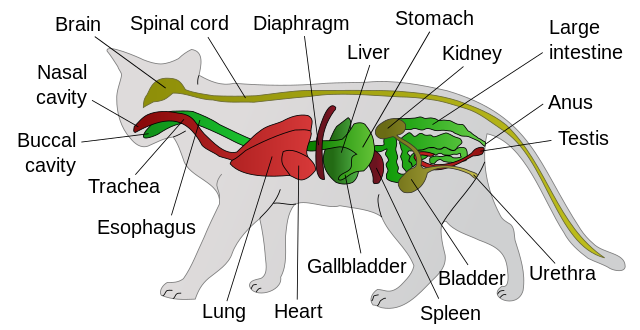Cat Dissection Resources with Student Guide
 Cat dissections are performed in advanced anatomy and physiology class.
Cat dissections are performed in advanced anatomy and physiology class.
Dissection in a biology classroom offers a hands-on, immersive learning experience that fosters a deeper understanding of anatomy, physiology, and biological systems.
Dissection engages students actively in the learning process, allowing them to see, touch, and manipulate actual specimens. This tactile experience helps solidify theoretical knowledge and encourages a deeper understanding of biological concepts.
Dissection provides students with a real-world context for the anatomical structures they study in textbooks. By observing the actual organs and tissues of different organisms, students gain practical insights into how biological systems function and how they vary across species.
For students interested in pursuing careers in biology, medicine, veterinary science, or related fields, experience with dissection provides a valuable foundation. It familiarizes them with techniques commonly used in research laboratories and medical settings, giving them a head start in their future careers.
| Day | Focus | Photos | Videos |
| 1 | Muscles | ||
| 2 | Dorsal Muscles | ||
| 3 | Heart and Vessels (anterior) | Vessels | Anterior Vessels |
| 4 | Vessels (posterior) | Posterior Vessels | |
| 5 | Digestive System | Digestive System | Cat Dissection |
| 6 | Urinary System |
Ward's Cat Visual Dissection Guide

Quizzes and Practice
Cat Dissection Photo Quiz (with answers)
Image Galleries
Cat Muscles (dorsal and ventral)
Circulatory System (Veins and Arteries)